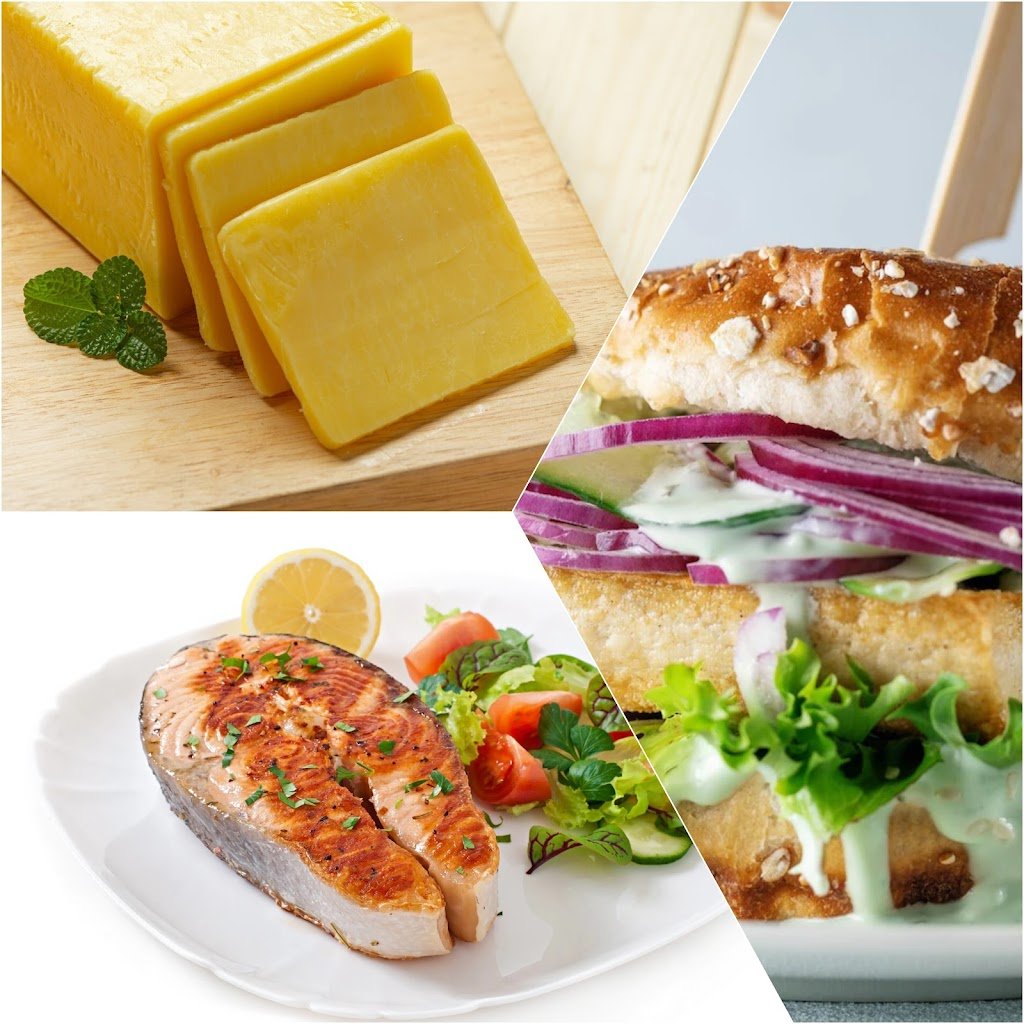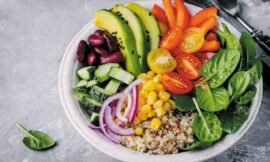Learn everything you need to know before starting a vegan and vegetarian diet, including its history, recommendations and components, as well as all the science behind it.
The vegan diet, unlike many other diets, uses both the health benefits of the food and considers the moral implications of the diet.
The vegan diet excludes all animal products, including animal products.
This means that all meat, fish, chicken, shellfish, dairy products, eggs, and other animal products are excluded from this diet.
In addition, many people who follow a vegan diet do not use animal products, such as skin, in their lives.
Although the moral implications of this diet are widely debated by philosophers, there are good moral reasons for adopting this concept.
In addition, while there are some health benefits to a vegetarian lifestyle, there are also some nutritional drawbacks that people who follow a vegetarian lifestyle should consider and avoid for optimal health.
Vegetarianism is comparable to veganism with one important difference: consumption of animal by-products that do not require the death of an animal is allowed.
This means that dairy products, eggs, cheese and other animal byproducts are allowed.
This is an important difference from veganism because eating eggs, cheese, and dairy products can help prevent many of the nutritional deficiencies seen in people following a vegan diet.
Pescatarianism is another step up the dietary ladder to total carnivory. It allows the consumption of fish.
History of vegan, vegetarian and pescatarian diets:
The idea of not eating animals has been around for centuries, mostly for religious reasons. For example, Buddhist vegetarianism can be attributed to the 6th to 4th century B.C.
Veganism as it is currently practiced can be credited to Donald Watson. He was one of the founders of the Vegan Society in England, and his original recipe for veganism was what is now described as non-dairy veganism.
He later changed it to the doctrine that humans should live without the exploitation of animals, both in consumption and other uses.
Read also:
Best High Protein Recipes That Anyone Can Cook
Overview of Components and Basic Principles:
The vegan diet simply requires that you consume no animals or their by-products. This means that all meat, fish, chicken, shellfish, dairy products, eggs, and other animal products are eliminated from the diet. By default, this requires people to rely entirely on plant foods.
As a result, vegan diets usually contain more dietary fiber, magnesium, folic acid, vitamins C and E, iron and phytochemicals, as well as fewer calories, saturated fat and cholesterol, long-chain n-3 (omega-3) fatty acids, vitamin D, calcium, zinc and vitamin B-121.
Because they often do not meet the daily requirement for omega-3 fatty acids, vitamin D, vitamin B-12, and choline, they often have to be supplemented. In addition, because they do not consume complete proteins from animal products, they must carefully consider and consider their protein source in order to get enough essential amino acids.
Vegan and Vegetarian:
Vegan and vegetarian diets operate on the same principle of avoiding animal products for moral and health reasons. However, a vegetarian diet differs from a vegan diet in that it allows the consumption of animal by-products such as milk, eggs and cheese.
This is an important distinction because vegetarians can use these animal by-products to provide a full range of amino acid intake, consuming enough choline and vitamin B-12 to cover potential nutrient deficiencies that vegans may face.
Vegan and pescatarian:
Pescatarianism is a modified version of vegetarianism. Pescatarians follow the same food philosophy and dietary approach as vegans and vegetarians, with one exception: they allow the consumption of fish and often other seafood such as shrimp, clams, and other crustaceans.
Pescatarianism can offer vegans or vegetarians the opportunity to consume foods rich in long-chain omega-3 fatty acids, such as EPA and DHA, to help prevent any deficiency in these nutrients that can occur with veganism or vegetarianism.
Vegan and raw food diets:
The raw diet takes veganism one step further and requires people to consume food only in its raw form. This means that food cannot be cooked or altered chemically or physically.
The raw diet has also been categorized as a clean eating diet. This is even more extreme because a clean eating diet allows food to be cooked, while raw eating does not.
The scientific premise of raw eating is that it is the best way to eat and get the maximum amount of nutrients from the foods you eat. This view of the scientific community is largely disproved.
Meal timing/frequency:
The vegan diet has no clear requirements for the number of meals per day, nor for meal times.
The principle of the diet can be integrated into any time or frequency schedule.
Restrictions/limitations:
The vegan diet places strict restrictions on animal products and requires their complete elimination from the diet. This includes all animal products such as dairy products, eggs, cheese, whey and cream.
Does it include phases:
The vegan diet does not include phases in any of its basic recipes.
Who is it best suited for:
A vegan diet is best for people who are morally committed to treating animals as equals and reducing the amount of harm and suffering in the universe.
A vegan diet is also best for followers of certain religions (e.g., Buddhism, Hinduism, Jainism).
How easy is it to follow:
A vegan diet can be challenging for a wide range of people because they have to give up a number of foods. Eliminating animal byproducts can make it especially difficult to eat, since most commercial kitchens use animal products in their dressings, sauces, and other main dishes.
Some people find that following a vegan diet becomes relatively easy after they learn to change their food environment and visit vegan-friendly restaurants.
The basic belief behind the diet:
The basic belief behind the vegan diet is mainly due to moral and religious reasons for not eating meat. There is also some scientific evidence that people use to support this diet.
The most famous “study” done on this approach to eating is the “China Study. “2 This major epidemiological study, conducted by T. Colin Campbell, claims that animal protein is associated with higher rates of cancer and other chronic diseases.
Scientific Studies and Interpretation of Data:
The Chinese study was largely dismissed as correlational data with poor methodology and should not be used as a point of reference to support vegan lifestyles.
However, there are dozens of well-controlled intervention studies examining vegan diets and lifestyles in terms of fat loss and health.
Fat Loss:
In one study, sixty-four overweight postmenopausal women were randomized to a vegan diet or the National Cholesterol Education Program diet for 14 weeks. After 1 year of the study, the group following the vegan diet had lost and maintained about 11 pounds of weight, compared with 4 pounds in the group following the National Cholesterol Education Program.
It is important to note that adhering to the diet and attending support meetings are also associated with weight loss, so it was probably diet adherence rather than the diet itself that provided a significant difference3.
Very similar results were reported in an article published in the Journal of the American Medical Association, where the Ornish diet protocol resulted in similar weight loss as the Atkins, Zone, and Weight Watchers diets, especially when diet adherence was taken into account4.
The body of evidence suggests that vegan diets are indeed effective for weight loss when diet adherence is high.
Overall Health:
High intake of plant foods compared to animal foods has been associated with improved inflammation, insulin resistance, and plasma lipids. In a recent comparison of the vegan diet with the American Diabetes Association diet, both diets were associated with sustained reductions in weight and plasma lipid concentrations.
In an analysis controlling for changes in medication intake, a low-fat vegan diet was found to improve glycemia and plasma lipids to a greater extent than conventional dietary recommendations for diabetes.5
Conclusion:
The vegan diet, unlike many other diets, uses both the health benefits of foods and considers the moral implications of the diet. The vegan diet excludes all animal products, including animal products.
This means that all meat, fish, chicken, shellfish, dairy products, eggs, and other animal products are excluded from this diet.
In addition, while there are some health benefits to living a vegan lifestyle, there are also some nutrient-deficient drawbacks that people following a vegan lifestyle should consider and avoid for optimal health.










